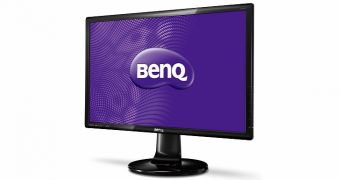There are two main factors to the increased eye fatigue associated with looking at an electronic display instead of just looking around at natural things without their own source of light. BenQ tried to deal with both of them when it made the GL2460HM, GL2760H, and GW2760HS displays.
Human eyes will always tire faster when gazing at an LCD screen for extended periods of time than if you, say, look at the horizon. This will never really change.
What can change is the degree to which such an activity can negatively impact our vision. BenQ's method, the newest and best one anyway, is called RevolutionEyes technology.
In truth, RevolutionEyes is a combination of ZeroFlicker and Low Blue Light technologies, both of which are pretty self-explanatory.
Flicker is an effect that isn't really perceived with the naked eye, but which becomes obvious when you, say, record a video on a monitor. You can clearly see the frames as they go up-down.
That effect may not be noticed, but it definitely affects the eye, putting strain on it and causing vision fatigue after a few hours. Flicker also manifests as variations in backlight intensity and brightness.
Flicker isn't such a big problem now as it was a decade or two ago, but it is, nonetheless, a problem. Higher refresh rates help alleviate it, as do flicker-free technologies like this ZeroFlicker from BenQ. It eliminates flicker at all brightness levels.
The other half of RevolutionEyes is the Low Blue light Technology, which reduces the intensity of the blue light in the RGB spectrum (red, green, blue, which form the colors that, in turn, produce the image on the screen).
There are pre-sets for web surfing, office, on-screen reading and multimedia, which you can swap between.
Add to that the energy efficiency of the SmartEco mode, which balances performance with energy efficiency and saves up to 44% power, and you're all set at the office.
The BenQ GL2460HM, GL2760H, and GW2760HS measures 24 inches, 27 inches and 27 inches, respectively.
The first two have TN panels (twisted nematic), with 2 ms response time and 12,000,000:1 DCR (dynamic contrast ratio), but the GW2760HS has a vertical alignment one (VA), for 20,000,000:1 DCR but 4 ms response time. Prices are of $249 / €249, $379 / €279 and $399 / €399, respectively.
All the newcomers have an intuitive on-screen display menu (OSD) and hide the controls behind the screen, for aesthetic purposes. Windows 8 is supported, but no touch input is made mention of in the press release.

 14 DAY TRIAL //
14 DAY TRIAL //